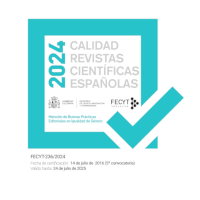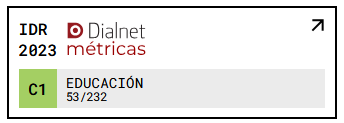El desarrollo cognitivo del niño : Desde los descubrimientos de Piaget hasta las investigaciones actuales
DOI:
https://doi.org/10.18172/con.486Abstract
This paper analyzes the origins and specificity of the recent research trend on the development in children of the Theory of mind which has undergone an impressive expansion over past fifteen years. A comparison with Piaget´s approach is proposed regarding the experimental data available on the coordination of perspectives as well as the epistemological foundations. The issues of the naturalization of the mind and its irreducibility are addressed within the framework of recent reductionist theories advanced by the philosophers of mind. Piaget´s contribution is considered as one of the most thorough of this century.Downloads
References
Astington, J. W., Harris, P. L. y Olson, D. R. (Eds.) (1988). Developing theories of mind. Cambridge: Cambridge University Press.
Bates, E., Benigni, L., Bretherton, I., Camaioni, L. y Volterra, V. (1979). Cognition and communication from 9-13 months: correlational findings. En E. Bates (Ed). The emergence of Symbols: Cognition and communication in infancy. New York: Academic Press.
Battistelli, P. (Ed.) (1995). Io penso che tu pensi... Le origini della comprensione della mente. Milano: FrancoAngeli.
Butterworth, G. (1991). The ontogeny and phylogeny of joint visual attention. En A. Whiten (Ed.), Natural theories of mind. Evolution, development and simulation of everyday mindreading. Oxford: Basil Blackwell.
Butterworth, G. y Castillo, M. (1976). Coordination of auditory and visual space in newborn infants. Perception, 5, 155-160.
Camaioni, L. (1993). The development of intentional communication: a re-analysis. En J. Nadel & L. Camaioni (Eds.), New perspectives in early communicative development. London: Routledge.
Campos, J. y Sternberg, C. (1981). Perception appraisal and emotion: The onset of social referencing. En M. Lamb y L. Sherrod (Eds.), Infant social cognition. Hillsdale: Lawrence Erlbaum Associates.
Chandler, M., Fritz, A. y Hala, S. (1989). Small scale deceit: deception as a marker of 2, 3, and 4 years-olds’ early theories of mind. Child Development, 60, 1263-1277.
Davidson, D. (1980). Essays on Actions and Events. Oxford: Oxford University Press (tr. fr. P. Engel (1983). Actions et évenements. Paris: P.U.F.)
Dennett, D. (1987). The Intentional Stance. Cambrdge: The MIT Press. (tr. fr. P. Engel (1990). La stratégie de l’interprète. Paris: Gallimard.
Ekman, P. (1984). Expression and the nature of emotion. En K. Scherery y P. Ekman (Eds.) Approaches to emotion (pp. 319-343). Hillsdale: Lawrence Erlbaum Associates.
Flavell, J. H. (1974). The development of inferences about others. En T. Michel (ed.) Understanding other persons. Oxford: Blackwell.
Flavell, J. H. (1978). The development of knowledge about visual perception. En C. B. Keasey (Ed.), Nebraska symposium on motivation (Vol. 25). Lincoln: University of Nebraska Press.
Flavell, J. H. (1992). Perspectives on perspective taking. En H. Beilin y P. Pifall (Eds.). Piaget's Theory: Prospects and Possibilities. (pp. 107-139) Hillsdale: LEA.
Flavell, J. H., Everett, B. A. Croft, K. y Flavell, E. R. (1981). Young children children’s knowledge about visual perception. Further evidence for the Level1-Level2 distinction. Developmental Psychology, 17, 99-103.
Flavell, J. H., Flavell, E. R. y Green, F. L. (1983). Development of the appearance-reality distinction. Cognitive Psychology. 15, 95-120.
Fodor, J. (1987). Psychosemantics: The Problem of meaning in the Phylosophy of Mind. Cambridge: The MIT Press.
Frye, D. y Moore, C. (Eds.) Children’s theories of mind. Mental states and social understanding. Hillsdale: LEA.
Goldman, A. (1989). Interpretation Psychologized. Mind and Language, 4(3), 161-185.
Houdé, O. (1995). Théorie de l'esprit, développement cognitif et inhibition: perspectives de recherches. En D. J. Duché y M. Dugas (Eds.), Entretiens d'ortophonie 1995 (pp. 24-28). Paris: Expansion Scientifique Française.
Meyer, E. (1935). La répresentation des relations spatiales chez l'enfant. Cahiers de Pédagogie Expérimentales et de Psychologie de l'Enfant, 8, 1-16.
Mounoud, P. (1970). Structuration de l'instrument chez l'enfant. Neuchatel: Delachaux et Niestlé.
Mounoud, P. (1988). The ontogenesis of different types of thought: Language and motor behavior as nonspeceific manifestations. En L. Weiskrantz (Ed), Thought without Language (pp. 25-45). Oxford: Clarendon Press.
Mounoud, P. (1993). The emergence of cognitive skills: Dialectic relations between knowledge systems. En G. J. P. Savelsberg (Ed.), The development of coordination in infancy (pp. 13-46). Amsterdam: North Holland.
Mounoud, P. (1994). Le passage des répresentations partialles à des répresentations d'ensemble. Enfance, 48(1), 5-32. (Engl. trad. Mounoud, P. (1996). A recursive tranformation of central cognitive méchanisms: The shift from partial to whole representations. En J. A. Sameroff y M. M. Haith (Eds.), The five to seven year shift: The age of reason and responsability (pp. 85-110). Chicago: Chicago University Press.).
Mounoud, P. (1995). Dall pensiero all'azione. Roma: La Nuova Italia Scientifica (NIS).
Piaget, J. ( 1947). La formation du symbole: imitation, jeu et rève, image et répresentation. Neuchâtel: Delachaux et Niestlé.
Piaget,J. y Inhelder, B. (1948). La répresentation de l’espace chez l’enfant. Paris: P.U.F.
Tomasello, M. (1995). Understanding the self as social agent. En P. Rochat (Ed.), The Self in Early Infancy. Theory and Research (pp. 449-460). Amsterdam: North Holland-Elsevier Sciences Publishers.
Vilette, B. (1996). Le développement de la quantification chez l’enfant. Lille: Presses Universitaires du Septentrion.
Wellman, H.M. (1990). The child’s theory of mind. Cambridge: The MIT Press.
Whiten, A. (Ed.) (1991). Natural theories of mind. Evolution, development and simulation of everyday mindreading. Oxford: Basil Blackwell.
Downloads
Published
How to Cite
Issue
Section
License
The authors retain copyright of articles and authorize Contextos Educativos. Revista de Educación the first publication. They are free to share and redistribute the article without obtaining permission from the publisher as long as they give appropriate credit to the editor and the journal.
Self-archiving is allowed too. In fact, it is recommendable to deposit a PDF version of the paper in academic and/or institutional repositories.












